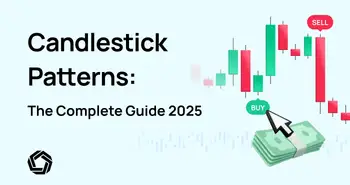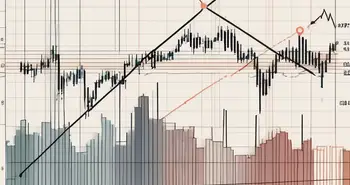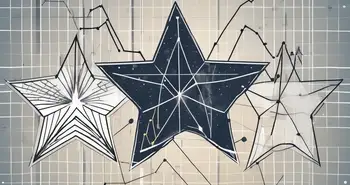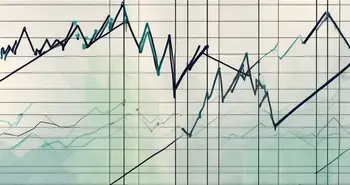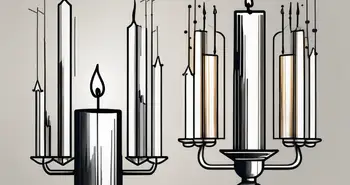The Stair Step Pattern Guide: How to Spot, Use and Profit

In Morpher, we believe understanding and utilizing chart patterns is fundamental for becoming a supertrader and make the best, informed decisions. Among these patterns, the Stair Step Chart Pattern stands out for its clear depiction of price movements and consolidations. This guide delves into the intricacies of the Stair Step Chart Pattern, offering insights on how to identify and trade using this pattern effectively.
For traders looking to expand their knowledge further, we also recommend exploring our ultimate guide on updated candlestick patterns. This resource provides a more comprehensive overview of various patterns that can strenghten your trading strategy.
Understanding the Basics of the Stair Step Pattern
Before we dive into the details, let's start by defining what the stair step pattern is and why it's important. The stair step pattern is a visual representation of the price action, characterized by alternating higher highs and higher lows in an uptrend, or lower lows and lower highs in a downtrend. It is a simple yet powerful tool that allows traders to identify the direction of the market and potential entry and exit points.
Definition and Importance of the Stair Step Pattern
The Stair Step Chart Pattern, also known as the Step Pattern or Step Chart, is a graphical representation of data that shows changes occurring at specific intervals. This pattern is particularly useful in visualizing data that remains constant for periods before jumping to a new value, which resembles the steps of a staircase.
The Key Elements of the Stair Step Pattern
To spot the stair step pattern, you need to pay attention to two key elements: the highs and the lows. In an uptrend, each high should be higher than the previous high, while each low should also be higher than the previous low. Conversely, in a downtrend, each low should be lower than the previous low, and each high should also be lower than the previous high.
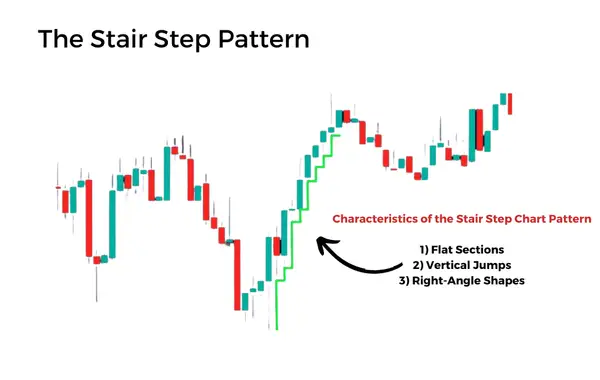
These key elements act as the building blocks of the stair step pattern. Each high and low represents a step in the market's journey, forming a staircase-like structure. By analyzing these steps, you can gauge the strength of the trend and anticipate potential turning points.
Moreover, the stair step pattern can provide valuable insights into market psychology. It reflects the tug-of-war between buyers and sellers, as they push the price higher or lower with each step. Understanding this dynamic can help you gauge market sentiment and make more informed trading decisions.
The Underlying Principles of the Stair Step Pattern
The stair step pattern is based on the concept of trend analysis. It assumes that markets move in trends, either up or down, and that these trends can be identified by analyzing the price action. By focusing on the highs and lows of price movements, traders can discern the overall direction and strength of a trend, enabling them to make informed trading decisions.
Moreover, the stair step pattern emphasizes the importance of market efficiency. It suggests that past price movements reflect all available information and that prices follow a random walk. However, by identifying patterns like the stair step, traders attempt to exploit inefficiencies in the market and gain a competitive edge.
The Stair Step Pattern Pros and Cons
Advantages of Using the Stair Step Pattern
- Clear Visual Representation: Makes it easy to identify periods of consolidation and breakouts.
- Identifies Key Levels: Helps in spotting significant support and resistance levels.
- Trend Identification: Useful in identifying and following trends.
Disadvantages of Using the Stair Step Pattern
- Delayed Signals: The pattern can sometimes provide signals that are lagging.
- False Breakouts: Not all breakouts result in significant moves; some can be false signals.
- Requires Confirmation: It’s best used with other technical analysis tools for confirmation to avoid false signals.
Ready to take a spin? Morpher offers advanced charts equipped with over 100 technical indicators that you can seamlessly combine with the Stair Step Pattern. Discover new levels of insight and precision in your trading decisions. Discover the future of trading today!

How to Identify the Stair Step Pattern
Spotting the stair step pattern may seem daunting at first, but with practice and a keen eye, you'll become proficient in recognizing it. Let's explore some techniques to help you identify this pattern effectively.
Recognizing the Stair Step Pattern in Different Contexts
The stair step pattern can appear in various timeframes and across different financial markets. Whether you're analyzing stocks, commodities, or forex pairs, the principles remain the same. Look for a series of higher highs and higher lows in an uptrend or lower lows and lower highs in a downtrend. Pay attention to the smoothness and consistency of the pattern to avoid false signals.
Components of the Pattern
- Support Levels: Flat sections can indicate support levels where the price consolidates before moving up.
- Resistance Levels: Similarly, flat sections at higher levels can represent resistance levels where the price struggles to break through.
Common Mistakes in Identifying the Stair Step Pattern
One common mistake traders make when identifying the stair step pattern is failing to consider the overall trend. It's essential to analyze the context in which the pattern occurs. Is it part of a larger uptrend or downtrend? Additionally, be cautious of false breakouts, where the price temporarily moves against the trend before resuming its original direction.
Strategies for Mastering the Stair Step Pattern
Now that you can identify the stair step pattern, let's explore some strategies to help you master its application in your trading decisions.
Tips for Enhancing Your Stair Step Pattern Recognition Skills
To improve your ability to recognize the stair step pattern, practice on historical charts and identify real-world examples. Analyze different timeframes to develop a keen eye for variations in pattern length and amplitude. Additionally, consider using technical indicators, such as moving averages or trendlines, to confirm the presence of the pattern.
Advanced Techniques for Interpreting the Stair Step Pattern
Once you've mastered the basics, you can delve into advanced techniques for interpreting the stair step pattern. Utilize Fibonacci retracements to identify potential levels of support and resistance within the pattern. Learn to identify price patterns within the stair step pattern, such as flags or wedges, which can provide additional trading opportunities.
Practical Applications of the Stair Step Pattern
Now that you have a solid understanding of the stair step pattern, let's explore some practical applications in real-world trading scenarios.
Using the Stair Step Pattern in Trading
The stair step pattern is a versatile tool that traders can use in various ways. You can employ it to confirm trend continuations or reversals, identify areas of support and resistance, and determine entry and exit points. By combining the stair step pattern with other technical analysis tools, you can develop robust trading strategies that align with your risk tolerance and investment goals.
The Stair Step Pattern in Portfolio Management
Portfolio managers can also benefit from the stair step pattern by incorporating it into their decision-making process. By monitoring the trends of individual securities or asset classes, portfolio managers can assess the overall health of their portfolios and make adjustments accordingly. The stair step pattern can provide valuable insights into when to allocate or reallocate assets, helping portfolio managers optimize their returns.
FAQ
What is the stair step pattern?
The stair step pattern is a visual representation of the price movement in an uptrend or a downtrend. It consists of a series of higher highs and higher lows in an uptrend, or lower lows and lower highs in a downtrend.
Why is the stair step pattern important?
The stair step pattern is important because it provides traders with a clear and concise visual representation of the market's direction. By recognizing and understanding this pattern, traders can make informed trading decisions and increase their profitability.
How do I identify the stair step pattern?
To identify the stair step pattern, look for a series of higher highs and higher lows in an uptrend, or lower lows and lower highs in a downtrend. Pay attention to the smoothness and consistency of the pattern, and consider the context in which it occurs.
What are some common mistakes in identifying the stair step pattern?
One common mistake is failing to consider the overall trend. It's essential to analyze the context in which the pattern occurs. Additionally, be cautious of false breakouts, where the price temporarily moves against the trend before resuming its original direction.
What are some practical applications of the stair step pattern?
The stair step pattern can be used to confirm trend continuations or reversals, identify areas of support and resistance, and determine entry and exit points in trading. Portfolio managers can also utilize the stair step pattern to assess the overall health of their portfolios and make informed allocation decisions.
What are some advanced techniques for interpreting the stair step pattern?
Advanced techniques include using Fibonacci retracements to identify potential levels of support and resistance within the pattern, and identifying price patterns within the stair step pattern, such as flags or wedges, which can provide additional trading opportunities.
By mastering the stair step pattern, you can gain a deeper understanding of market trends and make more informed trading decisions. Remember to practice and refine your skills over time, and always stay curious and adaptable in the ever-evolving world of finance. Happy trading!
Ready to put your newfound knowledge of the stair step pattern into action? Look no further than Morpher, the revolutionary trading platform that empowers you to trade with zero fees and infinite liquidity. Whether you're interested in stocks, cryptocurrencies, forex, or even niche markets like NFTs, Morpher's blockchain technology offers a unique and flexible trading experience. Start with as little as $1 through fractional investing, take advantage of 10x leverage, and enjoy the safety of the Morpher Wallet. Embrace the future of trading and Sign Up and Get Your Free Sign Up Bonus today to elevate your trading strategy with Morpher!

Disclaimer: All investments involve risk, and the past performance of a security, industry, sector, market, financial product, trading strategy, or individual’s trading does not guarantee future results or returns. Investors are fully responsible for any investment decisions they make. Such decisions should be based solely on an evaluation of their financial circumstances, investment objectives, risk tolerance, and liquidity needs. This post does not constitute investment advice.

Painless trading for everyone
Hundreds of markets all in one place - Apple, Bitcoin, Gold, Watches, NFTs, Sneakers and so much more.

Painless trading for everyone
Hundreds of markets all in one place - Apple, Bitcoin, Gold, Watches, NFTs, Sneakers and so much more.

